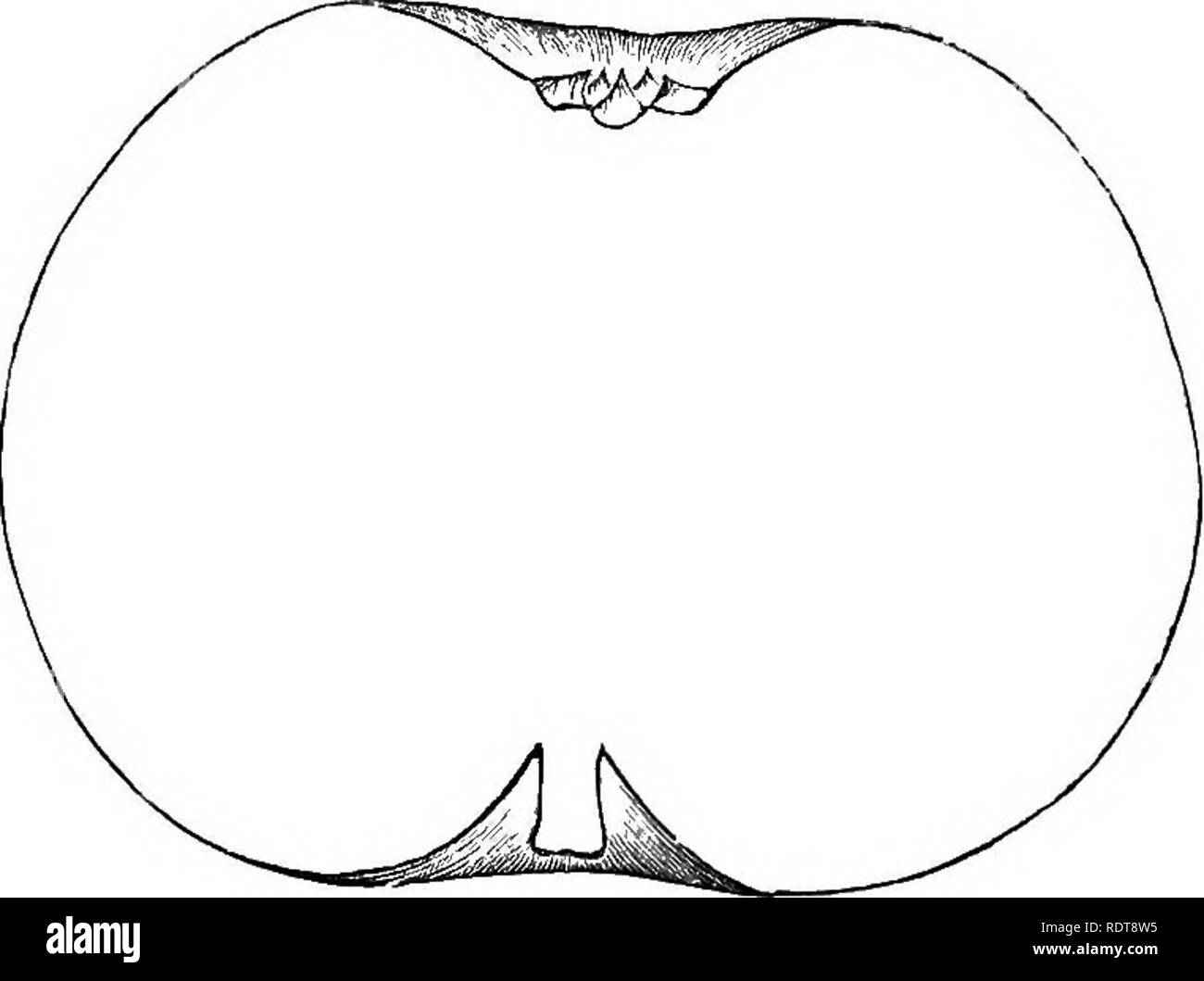. The apple and its varieties: being a history and description of the varieties of apples cultivated in the gardens and orchards of Great Britain. Apples. THE APPLE. ITS VARIETIES. 211 Fruit, large, three inches and a half broad in the middle, and three inches high ; ovate, widest at the middle, and narrowing both towards the base and the apex, with obtuse angles on the sides, which terminate at the crown in several prominent ridges. Skin, smooth, deep clear yellow, with a rich golden or orange tinge, on the side next the sun, and covered with numerous dark spots. Eye, large and open, with lon

Image details
Contributor:
The Book Worm / Alamy Stock PhotoImage ID:
RDT8W5File size:
7.2 MB (114.9 KB Compressed download)Releases:
Model - no | Property - noDo I need a release?Dimensions:
1831 x 1365 px | 31 x 23.1 cm | 12.2 x 9.1 inches | 150dpiMore information:
This image is a public domain image, which means either that copyright has expired in the image or the copyright holder has waived their copyright. Alamy charges you a fee for access to the high resolution copy of the image.
This image could have imperfections as it’s either historical or reportage.
. The apple and its varieties: being a history and description of the varieties of apples cultivated in the gardens and orchards of Great Britain. Apples. THE APPLE. ITS VARIETIES. 211 Fruit, large, three inches and a half broad in the middle, and three inches high ; ovate, widest at the middle, and narrowing both towards the base and the apex, with obtuse angles on the sides, which terminate at the crown in several prominent ridges. Skin, smooth, deep clear yellow, with a rich golden or orange tinge, on the side next the sun, and covered with numerous dark spots. Eye, large and open, with long acuminate segments, placed in a deep, furrowed, and angular basin. Stalk, short, inserted in a deep and round cavity, which is thickly lined with russet. Flesh, yellow, tender, crisp, rich, sugary, brisk, and aromatic. A most valuable apple either for the dessert or culinary purposes; it is in season during September and October. This admirable apple was raised by T. A. Knight, Esq., and first brought into notice in 1811. As a culinary apple it is not to be surpassed; and even in the dessert, when well ripened, Mr. Knight considered it closely resembled the Newtown Pippin. The tree is hardy, healthy, a free and abundant bearer. It has been found to succeed in every latitude of these kingdoms. Even in Rosshire, the late Sir. G. S. McKenzie, found it to succeed well as an espalier. It ought to be cultivated in every garden, however small. 397. WYKEN PIPPIN.—Hort. Identification.—Hort. Soc. Cat. ed. 3, u. 886. Lind. Guide, 25. Kog. Er. Cult. 93. SrNONYMES.—"Warwickshire Pippin, Hort. Soc. Cat. ed. 1, 39. Arley, Bid. 18. Girkin Pippin, ace. Hort. Soc. Cat. ed. 3. EiGUKE.—Ron. Pyr. Mai. pi. xli. f. 1. Fruit, below medium size, two inches and a half broad, and two inches high ; oblate, even and handsomely shaped. Skin, smooth, pale greenish-yellow in the shade ; but with a dull orange blush next the sun, and sprinkled all over with russety dots and patches of delicate